Sore throat due to nasal drip. Sore Throat from Nasal Drip: Effective Treatments for Colds and Allergies
How can you tell if your sore throat is caused by a cold or allergies. What are the most effective treatments for nasal drip-induced sore throat. How do dust mites contribute to allergies and what measures can be taken to reduce their impact.
Distinguishing Between Colds and Allergies: Key Symptoms and Characteristics
When faced with a sore throat, runny nose, and sneezing, it can be challenging to determine whether you’re dealing with a cold or allergies. While these conditions share some common symptoms, there are distinct differences that can help you identify the root cause of your discomfort.
Symptom Comparison: Cold vs. Allergies
- Aches and pains: Sometimes present in colds, rarely in allergies
- Itchy, watery eyes: Rarely seen in colds, common in allergies
- Runny nose: Present in both conditions
- Fever: Sometimes occurs with colds, not typically associated with allergies
- Sneezing: Common in both conditions
- Sore or scratchy throat: Can occur in both, but more common in colds
- Stuffy nose: Present in both conditions
- Fatigue: Sometimes experienced in both
- Cough: Can occur in both conditions
Understanding these differences can help you choose the most appropriate treatment for your symptoms. But what other factors should you consider when differentiating between colds and allergies?

Seasonal Patterns and Onset of Symptoms
The time of year and the speed at which symptoms appear can provide valuable clues. Seasonal allergies, often called hay fever, typically occur at predictable times, such as spring when pollen counts are high. Colds, on the other hand, can strike at any time, though they’re more common in colder months.
Allergy symptoms often appear almost immediately after exposure to a trigger, while cold symptoms usually take 1 to 3 days to develop after exposure to a virus. This difference in onset can help you pinpoint the cause of your discomfort.
Duration of Symptoms
The length of time you experience symptoms can also indicate whether you’re dealing with a cold or allergies. Colds typically last 3 days to a week, with some cases extending up to 2 weeks. If symptoms persist beyond this timeframe or worsen after about 5 days, it’s advisable to consult a doctor, as it could indicate a bacterial infection.
Allergy symptoms, however, can last as long as you’re exposed to the allergen. For example, if you’re allergic to pollen and spend significant time outdoors during spring, your symptoms might persist throughout the entire season.

Effective Treatments for Nasal Drip-Induced Sore Throat
Once you’ve identified whether your sore throat is caused by a cold or allergies, you can focus on finding the most effective treatment. Both conditions can lead to nasal drip, which can irritate the throat and cause discomfort. How can you alleviate these symptoms?
Over-the-Counter Medications
- Antihistamines: These can help reduce allergy symptoms, including nasal drip
- Decongestants: Useful for relieving nasal congestion in both colds and allergies
- Pain relievers: Can help with throat pain and other discomforts associated with colds
- Throat lozenges: Provide temporary relief for sore throats
Natural Remedies
Several natural remedies can complement medical treatments or provide relief for milder cases:
- Saltwater gargle: Can help reduce throat inflammation
- Honey: Known for its antibacterial properties and soothing effects
- Herbal teas: Chamomile, ginger, and licorice root teas can help soothe a sore throat
- Steam inhalation: Can help clear nasal passages and reduce throat irritation
- Nasal irrigation: Using a neti pot can help flush out irritants and excess mucus
Is it possible to prevent nasal drip-induced sore throats altogether? While complete prevention may not always be possible, certain measures can reduce their frequency and severity.
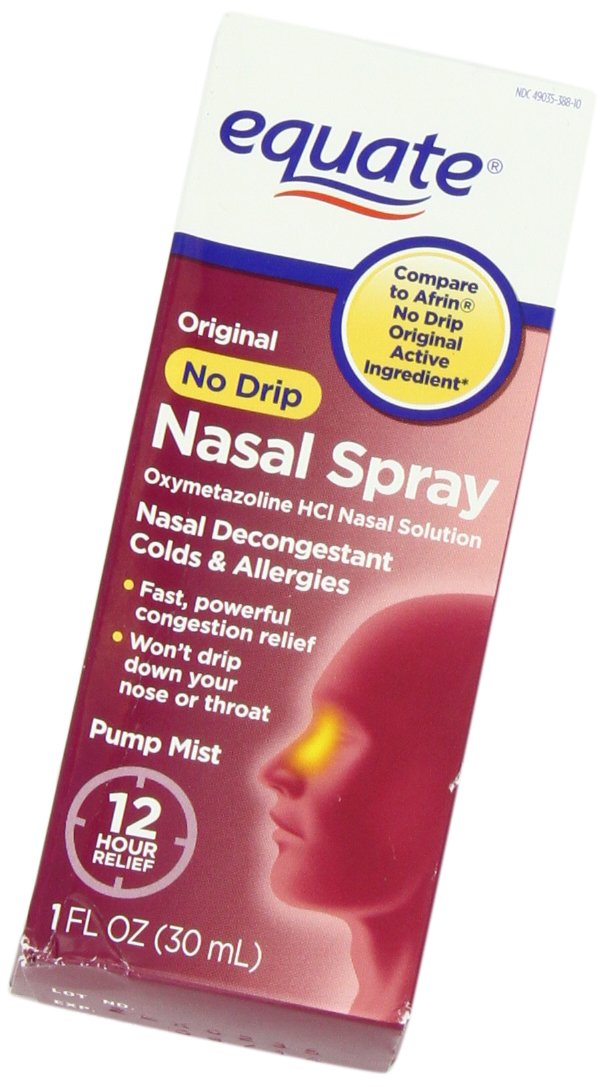
Preventing Nasal Drip and Associated Sore Throats
Taking proactive steps to manage allergies and reduce exposure to cold viruses can significantly decrease the occurrence of nasal drip and related sore throats.
Allergy Management Strategies
- Identify and avoid allergen triggers
- Use air purifiers to reduce airborne allergens
- Keep windows closed during high pollen days
- Shower and change clothes after spending time outdoors during allergy season
- Consider immunotherapy (allergy shots) for severe allergies
Cold Prevention Techniques
- Practice good hand hygiene
- Avoid close contact with individuals who have colds
- Boost your immune system through a healthy diet, regular exercise, and adequate sleep
- Avoid touching your face, especially your nose and mouth
- Disinfect frequently touched surfaces regularly
By implementing these preventive measures, you can reduce your risk of developing nasal drip and the associated sore throat. But what if allergies persist despite your best efforts?
Understanding and Managing Dust Mite Allergies
Dust mites are a common allergen that can contribute to persistent allergy symptoms, including nasal drip and sore throat. These microscopic creatures thrive in warm, humid environments and feed on dead skin cells shed by humans and pets.

Symptoms of Dust Mite Allergies
Dust mite allergies can manifest in various ways, including:
- Watery, red eyes
- Runny or itchy nose and sneezing
- Sore throat or hoarse voice
- Coughing and other breathing problems
- Skin rash and itching
- Worsening of asthma symptoms
How can you effectively reduce dust mite populations in your home and minimize their impact on your health?
Dust Mite-Proof Covers: A First Line of Defense
One of the most effective ways to combat dust mite allergies is by using dust mite-proof covers for your mattress, pillows, and box springs. These covers work by sealing in allergens, preventing you from inhaling them while sleeping.
Studies have shown that using dust mite covers can lead to a reduction in asthma medication usage for some children with asthma. When choosing dust mite covers, consider the following:
- Opt for plastic or vinyl covers with zippers for optimal sealing
- Look for covers with an outer layer of material like nylon for improved comfort
- Cover mattresses and pillows when they are new, if possible
- Use duct tape or electrical tape over cover zippers for extra protection
Additional Strategies for Minimizing Dust Mites
Beyond using dust mite-proof covers, there are several other measures you can take to reduce dust mite populations in your home:
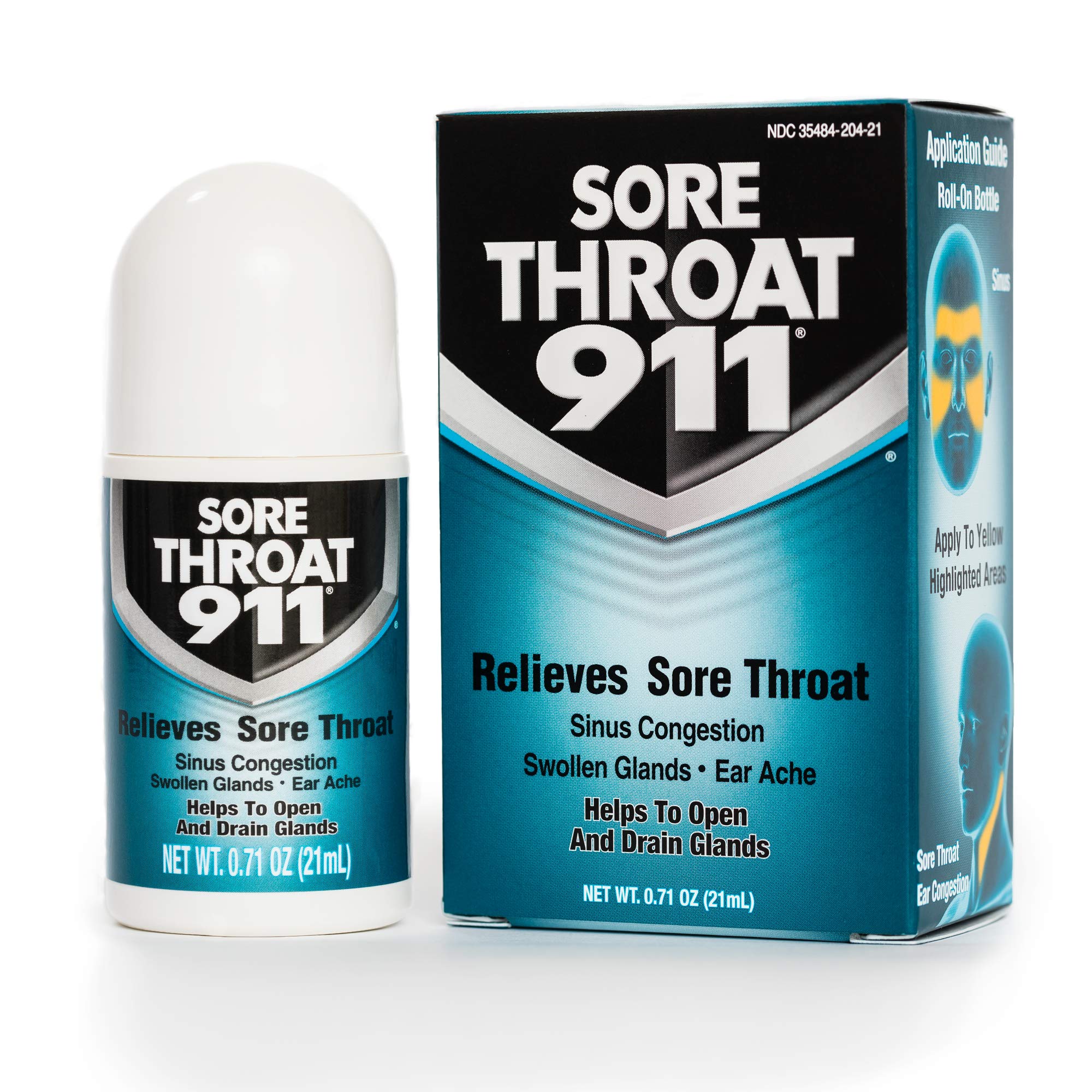
- Use a bed frame made of wood or metal
- Wash bedding in hot water weekly, as cold water does not kill dust mites
- Clean sheets and pillowcases at least once a week
- Wash comforters and bedspreads every one to two months
- Consider using an electric blanket to reduce humidity on the bed
By implementing these strategies, you can significantly reduce your exposure to dust mites and alleviate associated allergy symptoms.
The Role of Humidity in Allergy and Cold Management
Humidity levels in your home can play a significant role in both allergy management and cold prevention. How does humidity affect these conditions, and what steps can you take to maintain optimal humidity levels?
Humidity and Allergies
High humidity levels can create an ideal environment for dust mites, mold, and other allergens to thrive. Conversely, very low humidity can dry out nasal passages, making them more susceptible to irritation and infection.
Humidity and Colds
While humidity doesn’t directly cause colds, it can affect how long the virus survives in the air and on surfaces. Some studies suggest that viruses may survive longer in very dry air, potentially increasing the risk of transmission.

Maintaining Optimal Humidity Levels
- Use a hygrometer to monitor indoor humidity levels
- Aim for humidity levels between 30-50%
- Use a dehumidifier in damp areas of your home
- Use a humidifier in dry environments, especially during winter months
- Ensure proper ventilation in bathrooms and kitchens
By maintaining appropriate humidity levels, you can create an environment less conducive to allergens and potentially reduce the survival of cold viruses.
The Impact of Diet on Allergy and Cold Symptoms
While diet isn’t typically considered a primary treatment for colds or allergies, certain foods and nutrients can play a role in supporting immune function and potentially reducing symptom severity. How can you optimize your diet to better manage these conditions?
Immune-Boosting Foods
Incorporating the following foods into your diet may help support your immune system:
- Citrus fruits high in Vitamin C
- Leafy greens rich in antioxidants
- Yogurt and other probiotic-rich foods
- Garlic, known for its antimicrobial properties
- Ginger, which may help reduce inflammation
Foods to Avoid
Some foods may exacerbate allergy symptoms or increase mucus production:

- Dairy products (for some individuals)
- Processed foods high in preservatives
- Alcohol, which can worsen nasal congestion
- Caffeine, which may lead to dehydration
Hydration
Staying well-hydrated is crucial for both allergy and cold management. Adequate hydration helps thin mucus secretions, making them easier to clear from nasal passages and reducing throat irritation.
By making mindful dietary choices, you can potentially reduce the severity of allergy and cold symptoms while supporting overall immune function.
The Future of Allergy and Cold Treatment: Emerging Research and Therapies
As our understanding of allergies and the common cold continues to evolve, researchers are exploring new avenues for treatment and prevention. What promising developments are on the horizon?
Targeted Immunotherapies
Researchers are developing more precise immunotherapies that can target specific allergens with greater efficacy and fewer side effects. These treatments aim to desensitize the immune system to particular allergens, potentially providing long-term relief from allergy symptoms.

Antiviral Nasal Sprays
New antiviral nasal sprays are being developed to combat cold viruses directly at their point of entry. These sprays aim to reduce viral replication and potentially shorten the duration of cold symptoms.
Microbiome Modulation
Emerging research suggests that the composition of our gut and respiratory microbiomes may influence our susceptibility to allergies and colds. Future treatments may focus on modulating these microbial communities to enhance immune function and reduce symptoms.
Gene Therapy
Advances in gene therapy may eventually lead to treatments that can modify the genetic factors contributing to allergies, potentially offering a more permanent solution for some individuals.
While these treatments are still in various stages of research and development, they offer hope for more effective management of allergies and colds in the future.
In conclusion, understanding the differences between colds and allergies, implementing effective treatments and preventive measures, and staying informed about emerging therapies can significantly improve your ability to manage nasal drip-induced sore throats and related symptoms. By taking a comprehensive approach that includes environmental control, appropriate medication use, and lifestyle modifications, you can minimize the impact of these common health issues on your daily life.
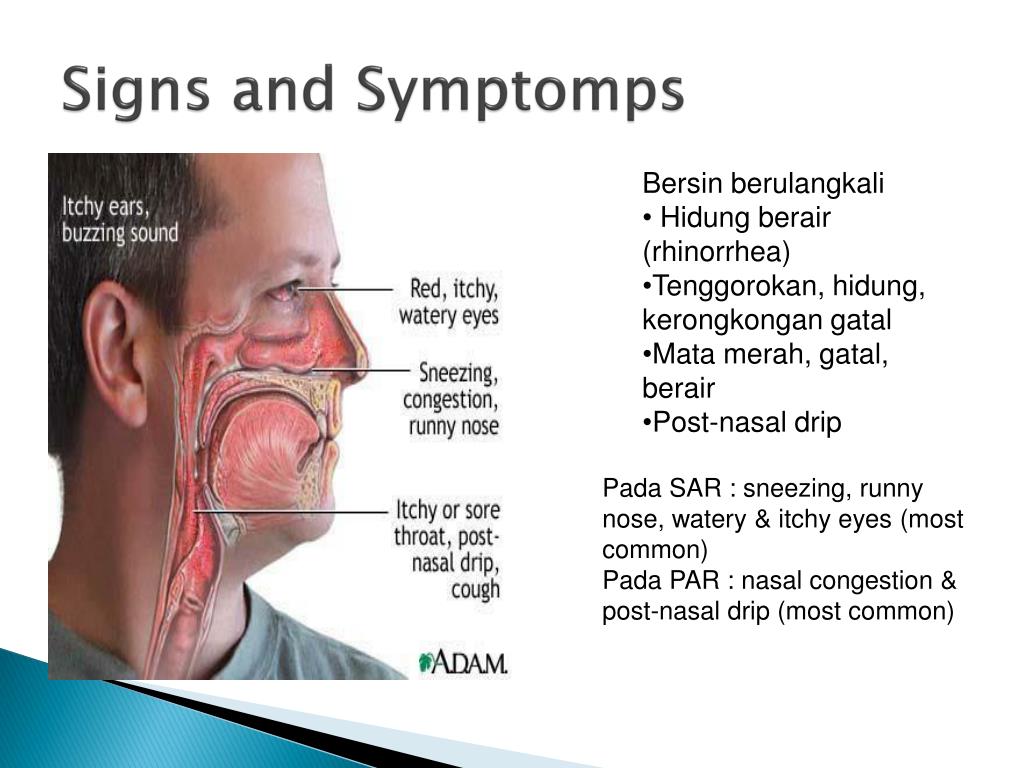
Treating Colds and Allergies
You’re sneezing and sniffling, with a stuffy nose and an itchy throat. With these kinds of symptoms, you probably have a cold. Then again, allergies can cause similar symptoms. So which one is it — a cold or allergies?
Before you open your medicine cabinet and start to search for relief, you need to know which type of medicine you need. Colds and allergies need different types of treatment.
When you’re not sure what the problem is, try these three simple tests. They’ll help you figure out whether you’ve got an allergy problem or just a typical cold.
Cold vs. Allergies: What Are Your Symptoms?
A runny nose and sneezing won’t tell you whether you have a cold or allergies, because they can be signs of either condition. But some symptoms are unique to either colds or allergies.
To help you decide, check your symptoms against this list:
| Cold | Allergies |
Aches and pains | Sometimes | No |
Itchy, watery eyes | Rarely | Yes |
Runny nose | Yes | Yes |
Fever | Sometimes | No |
Sneezing | Yes | Yes |
Sore or scratchy throat | Sometimes | Sometimes |
Stuffy nose | Yes | Yes |
Fatigue | Sometimes | Sometimes |
Cough | Sometimes | Sometimes |
What’s the Season?
If you’re sneezing and sniffling in April and your car is coated with yellow-green pollen, you may be able to point to an obvious cause: seasonal allergies or hay fever. This is especially true if you get the same symptoms at about the same time every year.
This is especially true if you get the same symptoms at about the same time every year.
Colds can hit at any time of year — even during spring and summer — although they’re most common when the weather gets chilly.
How fast your symptoms occur can also determine what’s ailing you. Allergies often start almost immediately after you’re exposed to your trigger. For example, if you’ve got pollen allergies, as soon as that pollen makes its way up your nostrils, you may have symptoms.
Cold germs typically take 1 to 3 days to make you sick. If your nose is starting to twitch and you realize you were sitting next to a sneezer at the movie theater 2 nights ago, a cold may be the cause.
How Long Have Your Symptoms Lasted?
Colds generally linger for 3 days to about a week, but symptoms can last up to 2 weeks in some people. Starting to feel better after a couple of days is a sign you’re probably on the mend from a cold.
If you’re getting worse, your cold may become a bacterial infection. If symptoms last more than 1 to 2 weeks or get worse after about 5 days, you should see a doctor.
If symptoms last more than 1 to 2 weeks or get worse after about 5 days, you should see a doctor.
Allergy symptoms will last for as long as you’re exposed to your trigger. So if you’re allergic to cat dander, once you say goodbye to your grandmother and their prized Persian cat to return home, your sniffles should subside. If your trigger is pollen and you spend most of the spring months outdoors, you could be facing symptoms for the whole season.
Dust Mite-Proof Mattress And Pillow Covers For Allergies
Each adult person sheds about one and a half grams of skin every day. Dust mites are microscopic creatures that can live in your bedding and carpets and feed on this skin.
Sound icky? It does explain why dust mite-proof pillow and mattress covers are your first line of defense against dust allergies!
Facts About Dust Mites
Dust mites are everywhere — anywhere there are people or animals, warm temperatures, and high humidity. They like to be indoors, where they can get plenty of food like mold spores and dead skin cells from people and pets.
If you are sensitive or allergic to them, you may have:
- Watery, red eyes
- Runny or itchy nose and sneezing
- Sore throat or hoarse voice
- Coughing and other breathing problems
- Skin rash and itching
- Worsening of your asthma
Dust mites settle down in carpet, draperies, stuffed animals, and upholstered furniture. Mattresses, pillows, and soft bedding are favorite hangouts.
Dust Mite-Proof Covers
Dust mite covers really work. One study found that some kids with asthma need less asthma medicine when they used mattress and pillow covers. Tests of their mattresses showed that dust mites colonies there dwindled. But never decrease your asthma medicine unless instructed by your doctor.
You can find dust mite covers for mattresses, pillows, and box springs at mattress and allergy supply stores and in a variety of materials.
- Plastic or vinyl covers with zippers help seal in allergens so you don’t inhale them when sleeping.

- Plastic or vinyl covers are easier to keep clean than covers made of natural fibers.
- Many plastic covers have an outer layer of material like nylon to make them more comfortable.
- If possible, cover your mattress and pillows when they are new.
- Put duct tape or electrical tape over cover zippers to double-block dust-mites from coming and going.
More Ways to Minimize Dust Mites
- Use a bed with a wooden or metal frame.
- Wash bedding in hot water. Cold water does not kill dust mites.
- Wash sheets and pillowcases at least once a week. Wash comforters and bedspreads every one to two months.
- Consider using an electric blanket, which can reduce humidity on bed surfaces.
- Wash and dry stuffed animals often and keep them off beds.
- Clean mattresses in late winter and early spring by vacuuming them with the upholstery attachment on your vacuum cleaner or a powerful handheld vacuum. That will kill any dust mites that survived the winter and reduce their numbers in the summer months.

5 Ways to Soothe a Sore Throat
Is there any time of year your throat doesn’t become red, raspy or irritated at least every once in a while? With allergies running from spring through fall, cold season being year-long, and winter bringing dry air for many people across the U.S., a dry or sore throat can be pretty common. Whether your throat is irritated from allergy season, post-nasal drip, a cold or infection, or being indoors in dry, heated air during winter, soothing that soreness can be done with some simple home remedies.
Here are five remedies for soothing your sore throat:
1. Drink warm or cold fluids
When you tell someone you’re not feeling well, the first advice they give is often “drink lots of fluids.” Hot tea or warm water with lemon not only soothes your throat but also helps clear mucus from your throat. The steam from hot tea or soup also helps open up nasal passages and keeps mucus flowing. Cool or cold fluids can soothe an irritated throat too, clearing mucus and reducing soreness and swelling.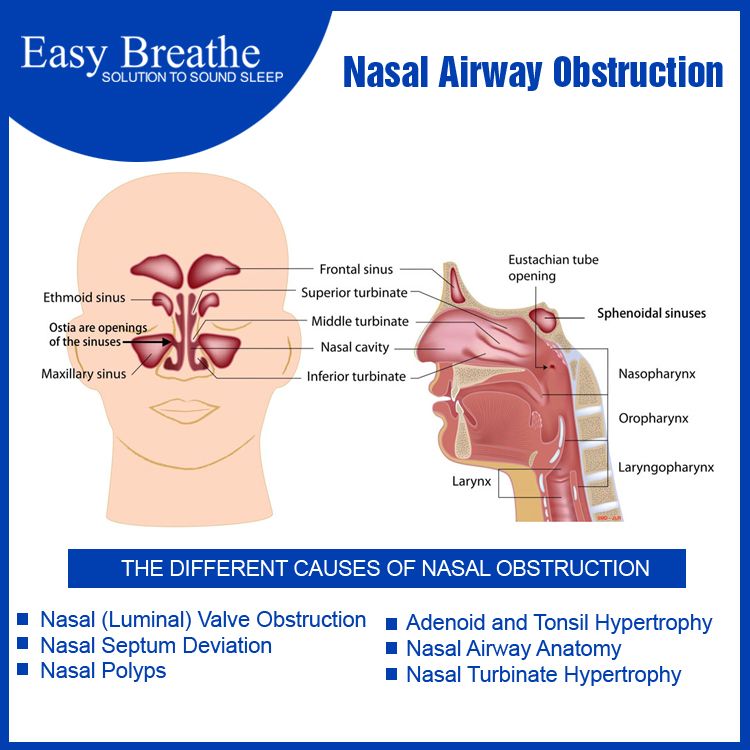 Drink warm or cold fluids at different times throughout the day.
Drink warm or cold fluids at different times throughout the day.
2. Honey
Honey coats your throat, which helps reduce irritation, and also has anti-bacterial properties. Its coating effect is especially helpful before bedtime to prevent coughing, feel relief and get a good night’s sleep. Swallow a teaspoonful alone or add it to warm tea or a hot toddy (add honey and lemon juice to hot water). When mixed with hot tea or a hot toddy, you get the added bonus of the hot liquid breaking up and thinning mucus.
3. Luden’s® Throat Drops
A convenient source of relief for a sore throat is to keep throat drops with you at home and on the go—year-round! Whether you suffer from dry mouth, have allergies or, are sick with a sore throat, Luden’s® Throat Drops bring soothing relief. Luden’s drops can help you speak smoothly through a meeting and temporarily relieve soreness due to your irritated throat. For most of the Luden’s drops, the active ingredient is pectin, which acts as a demulcent—forming a protective layer over mucous membranes and relieving inflammation and irritation. Some Luden’s varieties use menthol to cool and soothe a sore throat and help clear nasal passages. There is even a melatonin drop that calms throat irritation and may help with sleep when taken before going to bed. The Luden’s® Dual Relief throat drop uses pectin and menthol to soothe your throat and help you to stop coughing.
Some Luden’s varieties use menthol to cool and soothe a sore throat and help clear nasal passages. There is even a melatonin drop that calms throat irritation and may help with sleep when taken before going to bed. The Luden’s® Dual Relief throat drop uses pectin and menthol to soothe your throat and help you to stop coughing.
4. Gargle with Salt Water or Baking Soda
Did your mom or grandmother make you gargle with salt water when you had a sore throat as a kid? If so, she definitely knew her stuff! Gargling with warm salt water actually helps break down mucus, reduce swelling and soothe irritation in your throat. All you need is to dissolve a half-teaspoon of salt in a full glass of warm water, gargle in the back of your throat and spit out. Repeat every three hours as needed.
5. Add Steam to the Air
Another classic mom favorite is setting up a vaporizer or humidifier to add steam to your room while you sleep. Steam from a humidifier, vaporizer or even a hot shower helps loosen mucus, moisturizes your throat and soothes irritation. Using a humidifier throughout the winter also may help prevent sore throats caused by dry air.
Using a humidifier throughout the winter also may help prevent sore throats caused by dry air.
You’ve probably noticed by now that you can use these tips alone or in combination with one another. Most of them can be used even when you don’t have a sore throat to keep your mucous membranes and throat moist, helping to prevent irritation. For example, if you have a speech to give and are worried about maintaining your voice the entire time, you can drink fluids, use honey and/or suck on a throat drop beforehand to help keep your throat moist.
One More Thing
If the above five tips don’t help and your sore throat gets worse or you have problems swallowing, fever, swollen lymph nodes or other symptoms, talk to your doctor. You may have an illness or infection that requires further treatment.
What Is Causing Your Irritating Post Nasal Drip?
Post nasal drip is irritating. It can cause congestion, a cough and a sore throat. It feels as though liquid is running down the back of your throat, and in many cases, it is. Post nasal drip is actually part of a condition called rhinitis – an inflammation of the lining of the nose.
Post nasal drip is actually part of a condition called rhinitis – an inflammation of the lining of the nose.
Post nasal drip, its causes and treatments
Post nasal drip occurs when mucus accumulates in the back of the nose. The mucus may drip down the back of the throat, either because there is excessive buildup, and/or because the nose is blocked and there is no way for the mucus to run out the nose. In reality, mucus mixes with saliva and exits down the throat daily. We don’t notice it until it becomes thick and there is more of it than usual.
The main symptom of post nasal drip is the sensation that fluid is running down the back of the nose but other symptoms can include a nagging cough, hoarseness, congestion, or a sore throat.1
Post nasal drip can be caused by myriad conditions or substances and, interestingly, what causes the condition in one person may not cause it in another. Some of the causes of post nasal drip include:
- The common cold
- Influenza
- Seasonal allergies, which are also called allergic rhinitis
- Sinus infections
- Medications
- Deviated septum
- Swallowing problems
- Extremely cold or dry air
- Dust or other particles in the air
- Pregnancy
- Objects stuck in the nose
Unfortunately, post nasal drip can also lead to health problems.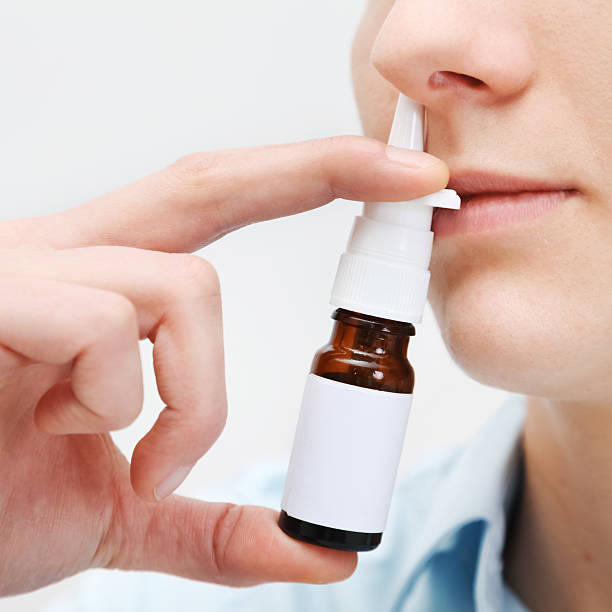 When mucus builds up in the airway, nagging coughs can ensue. Left untreated, the cough may cause a sore throat which can lead to an ear infection (if it clogs the small tube that runs from the throat to the ear) and a sinus infection (if it clogs the sinus cavities).
When mucus builds up in the airway, nagging coughs can ensue. Left untreated, the cough may cause a sore throat which can lead to an ear infection (if it clogs the small tube that runs from the throat to the ear) and a sinus infection (if it clogs the sinus cavities).
It’s important to consult with a physician if you suffer with chronic post nasal drip. It may be caused by a bacterial infection, and if so, antibiotics may be prescribed. However, if the infection is viral, antibiotics won’t help. Your doctor will be able to diagnose the cause of your post nasal drip and advise if OTC meds such as antihistamines and decongestants will relieve any of the symptoms. It’s especially important to see your physician if the mucus is yellow or green, if there is blood in it, if it smells bad or foul, and/or if you run a fever.
In addition to medications and the antibiotics that may be prescribed by your physician, there are home remedies that may help ease your symptoms:
- Humidifier’s help moisten the lining of the nose and thin the mucus
- Neti pots irrigate the nose with saline solution
- Sleeping position – sleep in an elevated position
- Fluids – drink fluids such as warm tea to loosen and thin the mucus
If you have post nasal drip don’t hesitate to consult your physician. It may be one of the most irritating conditions, but it can also be treated easily. There is no need to lose sleep to congestion, coughing and mucus running down the back of your throat.
It may be one of the most irritating conditions, but it can also be treated easily. There is no need to lose sleep to congestion, coughing and mucus running down the back of your throat.
References
1: https://www.health.harvard.edu/staying-healthy/treatments-for-post-nasal-drip
Post-Nasal Drip – ENTSC
The glands in your nose and throat continually produce mucus (one to two quarts a day). It moistens and cleans the nasal membranes, humidifies air, traps and clears inhaled foreign matter, and fights infection. Although mucus normally is swallowed unconsciously, the feeling that it is accumulating in the throat or dripping from the back of your nose is called post-nasal drip.
This feeling can be caused by excessive or thick secretions or by throat muscle and swallowing disorders.
What Causes Abnormal Secretions – Thin and Thick
Increased thin clear secretions can be due to colds and flu, allergies, cold temperatures, bright lights, certain foods/spices, pregnancy, and other hormonal changes. Various drugs (including birth control pills and high blood pressure medications) and structural abnormalities can also produce increased secretions. These abnormalities might include a deviated or irregular nasal septum (the cartilage and bony dividing wall that separates the two nostrils).
Various drugs (including birth control pills and high blood pressure medications) and structural abnormalities can also produce increased secretions. These abnormalities might include a deviated or irregular nasal septum (the cartilage and bony dividing wall that separates the two nostrils).
Increased thick secretions in the winter often result from too little moisture in heated buildings and homes. They can also result from sinus or nose infections and some allergies, especially to certain foods such as dairy products. If thin secretions become thick and green or yellow, it is likely that a bacterial sinus infection is developing. In children, thick secretions from one side of the nose can mean that something is stuck in the nose (such as a bean, wadded paper, or piece of toy, etc.).
Sinuses are air-filled cavities in the skull. They drain into the nose through small openings. Blockages in the openings from swelling due to colds, flu, or allergies may lead to acute sinus infection.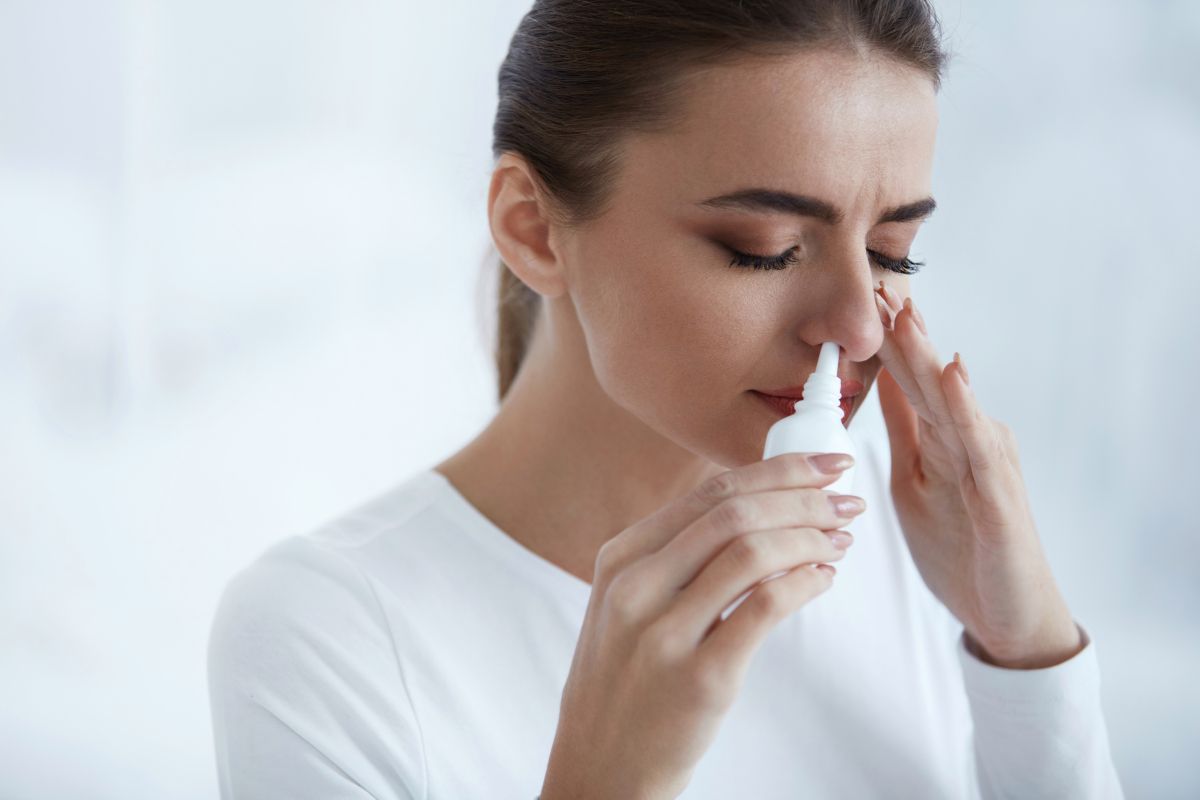 A viral “cold” that persists for 10 days or more may have become a bacterial sinus infection. With this infection you may notice increased post-nasal drip. If you suspect that you have a sinus infection, you should see your physician for antibiotic treatment.
A viral “cold” that persists for 10 days or more may have become a bacterial sinus infection. With this infection you may notice increased post-nasal drip. If you suspect that you have a sinus infection, you should see your physician for antibiotic treatment.
Chronic sinusitis occurs when sinus blockages persist and the lining of the sinuses swell further. Polyps (growths in the nose) may develop with chronic sinusitis. Patients with polyps tend to have irritating, persistent post-nasal drip. Evaluation by an otolaryngologist may include an exam of the interior of the nose with a fiberoptic scope and CAT scan x-rays. If medication does not relieve the problem, surgery may be recommended.
Vasomotor rhinitis describes a nonallergic “hyperirritable nose” that feels congested, blocked, or wet.
Swallowing Problems
Swallowing problems may result in accumulation of solids or liquids in the throat that may complicate or feel like post-nasal drip. When the nerve and muscle interaction in the mouth, throat, and food passage (esophagus) aren’t working properly, overflow secretions can spill into the voice box (larynx) and breathing passages (trachea and bronchi) causing hoarseness, throat clearing, or cough.
When the nerve and muscle interaction in the mouth, throat, and food passage (esophagus) aren’t working properly, overflow secretions can spill into the voice box (larynx) and breathing passages (trachea and bronchi) causing hoarseness, throat clearing, or cough.
Several factors contribute to swallowing problems:
- With age, swallowing muscles often lose strength and coordination. Thus, even normal secretions may not pass smoothly into the stomach.
- During sleep, swallowing occurs much less frequently, and secretions may gather. Coughing and vigorous throat clearing are often needed when awakening.
- When nervous or under stress, throat muscles can trigger spasms that feel like a lump in the throat. Frequent throat clearing, which usually produces little or no mucus, can make the problem worse by increasing irritation.
- Growths or swelling in the food passage can slow or prevent the movement of liquids and/or solids.

Swallowing problems may be caused also by gastroesophageal reflux disease (GERD). This is a return of stomach contents and acid into the esophagus or throat. Heartburn, indigestion, and sore throat are common symptoms. GERD may be aggravated by lying down especially following eating. Hiatal hernia, a pouch-like tissue mass where the esophagus meets the stomach, often contributes to the reflux.
Chronic Sore Throat
Post-nasal drip often leads to a sore, irritated throat. Although there is usually no infection, the tonsils and other tissues in the throat may swell. This can cause discomfort or a feeling of a lump in the throat. Successful treatment of the post-nasal drip will usually clear up these throat symptoms.
Treatment
A correct diagnosis requires a detailed ear, nose, and throat exam and possible laboratory, endoscopic, and x-ray studies. Each treatment is different:
Bacterial infection, when present, is treated with antibiotics.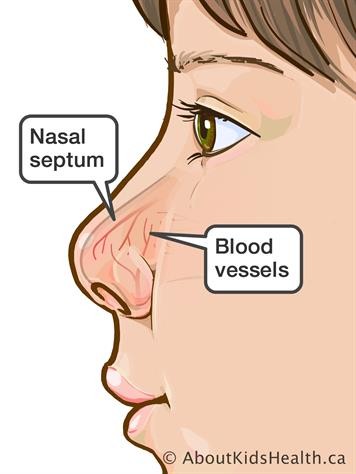 These drugs may provide only temporary relief. In cases of chronic sinusitis, surgery to open the blocked sinuses may be required.
These drugs may provide only temporary relief. In cases of chronic sinusitis, surgery to open the blocked sinuses may be required.
Allergy is managed by avoiding the cause if possible. Antihistamines and decongestants, cromolyn and steroid (cortisone type) nasal sprays, and other forms of steroids may offer relief. Immunotherapy (allergy shots) also may be helpful. However, some older, sedating antihistamines may dry and thicken post-nasal secretions even more; newer nonsedating antihistamines, available by prescription only, do not have this effect. Decongestants can aggravate high blood pressure, heart, and thyroid disease. Steroid sprays generally may be used safely under medical supervision. Oral and injectable steroids rarely produce serious complications in short-term use. Because significant side-effects can occur, steroids must be monitored carefully when used for more than one week.
Gastroesophageal reflux is treated by elevating the head of the bed six to eight inches, avoiding foods and beverages for two to three hours before bedtime, and eliminating alcohol and caffeine from the daily diet.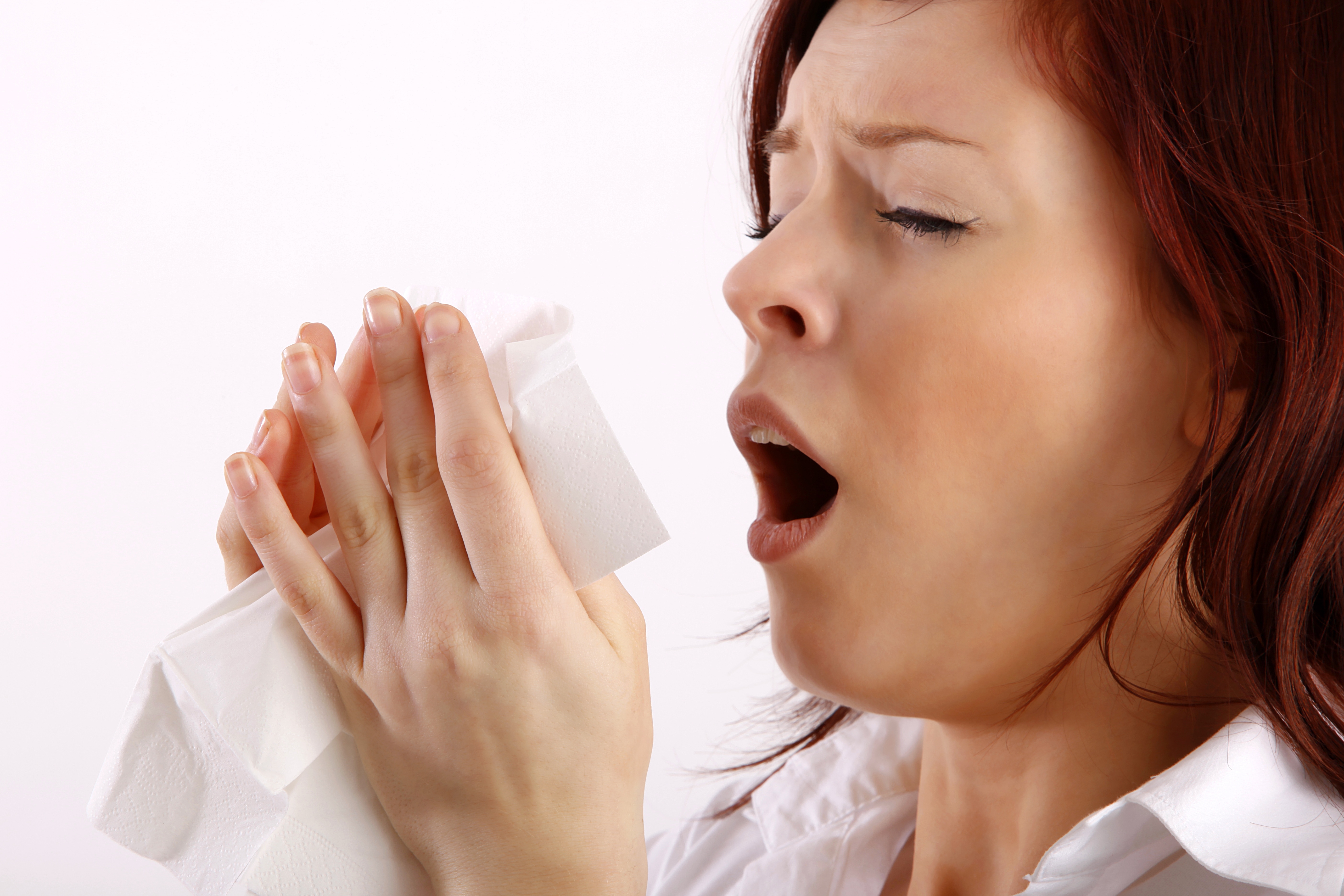 Antacids (e.g., Maalox®, Mylanta®, Gaviscon ®) and drugs that block stomach acid production (e.g., Zantac®, Tagamet®, Pepcid®) or more powerful medications may be prescribed. A trial treatment may be suggested before x-rays and other diagnostic studies are performed.
Antacids (e.g., Maalox®, Mylanta®, Gaviscon ®) and drugs that block stomach acid production (e.g., Zantac®, Tagamet®, Pepcid®) or more powerful medications may be prescribed. A trial treatment may be suggested before x-rays and other diagnostic studies are performed.
General measures for thinning secretions so they can pass more easily may be recommended when it is not possible to determine whether an existing structural abnormality is causing the post-nasal drip or if some other condition is to blame.
Many people, especially older persons, need more fluids to thin secretions. Drinking more water, eliminating caffeine, and avoiding diuretics (fluid pills) will help. Mucous-thinning agents such as guaifenesin (Humibid®, Robitussin®) may also thin secretions.
Nasal irrigations may alleviate thickened secretions. These can be performed two to four times a day either with a nasal douche device or a Water Pik® with a nasal irrigation nozzle. Warm water with baking soda or salt (1/2 to 1 tsp.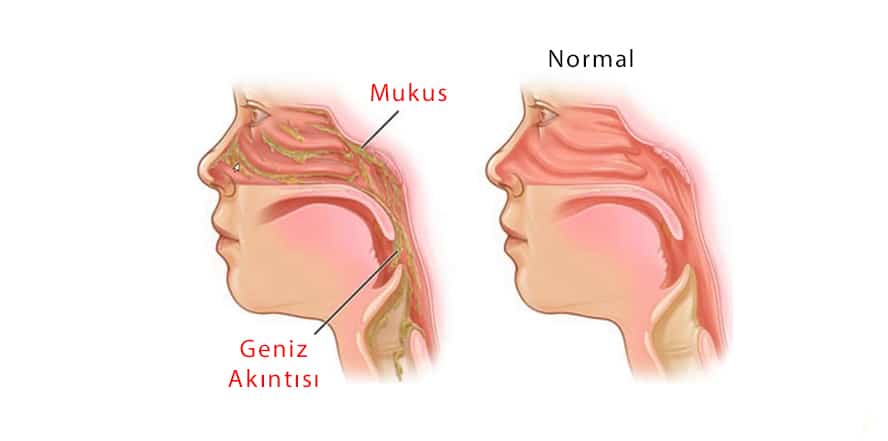 to the pint) or Alkalol®, a nonprescription irrigating solution (full strength or diluted by half warm water), may be helpful. Finally, use of simple saline (salt) nonprescription nasal sprays (e.g., Ocean®, Ayr®, or Nasal®) to moisten the nose is often very beneficial.
to the pint) or Alkalol®, a nonprescription irrigating solution (full strength or diluted by half warm water), may be helpful. Finally, use of simple saline (salt) nonprescription nasal sprays (e.g., Ocean®, Ayr®, or Nasal®) to moisten the nose is often very beneficial.
Eight Things About Post-Nasal Drip You Didn’t Know
Eight Things About Post-Nasal Drip You Didn’t Know
You may have suffered or are suffering currently from post-nasal drip, but you didn’t even know it. What a is post-nasal drip? What are the symptoms and what causes post-nasal drip? How is it treated and should I see a doctor? Read on to learn eight important facts about post-nasal drip.
1 – What is Post-Nasal Drip?
The glands in your nose and throat normally produce mucus to fight infections, catch foreign substances, and keep you nasal membranes moist. Post-nasal drip occurs when you nose and throat produce excess mucus, often causing you to feel it dripping down from your nose into your throat.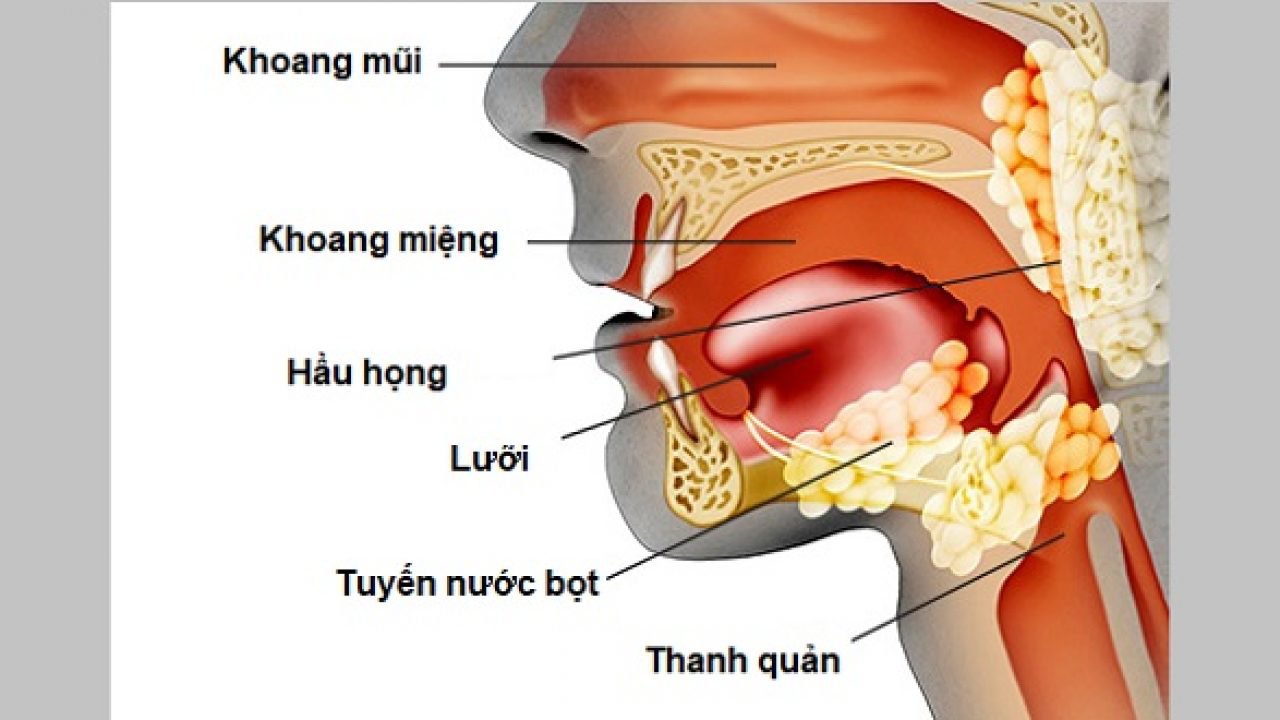
2 – What are some of the Symptoms of Post-Nasal Drip?
The most common symptom is the feeling that mucus is draining into your throat, causing you to feel like you need to constantly cough. Other symptoms include:
- Nausea due to the excess mucus draining into your stomach
- A scratchy or sore throat
- Bad breath
3 – What Causes Post-Nasal Drip?
Post-nasal drip can be caused by a multitude of reasons. Some of the most common causes include:
- Allergies
- Deviated septum
- Nasal polyps
- Common cold
- Cold temperatures
- Bacterial infections
- Sinus infections
- Dry air
- Pregnancy
- Spicy Foods
- Some medications
4 – When Should You See a Doctor?
If your symptoms have lasted longer than ten days, or if they’re getting worse, you should make an appointment with your ENT specialist. Symptoms including fever, wheezing, breathing difficulties, or mucus with a strong odor also indicate that it’s time to visit your ENT specialist.
Symptoms including fever, wheezing, breathing difficulties, or mucus with a strong odor also indicate that it’s time to visit your ENT specialist.
5 – What are Over-the-Counter Medications that Can Help with Post-Nasal Drip?
Over-the-counter medications such as decongestants and antihistamines can help to ease the symptoms of post-nasal drip.
6 – What Other Home Treatments Might Help with Post-Nasal Drip?
Other treatments that you can try on your own include saline nasal sprays, staying hydrated, and sleeping with your head elevated slightly have been known to help with the symptoms associated with post-nasal drip.
7 – How Can I Reduce the Chances of Being Affected by Post-Nasal Drip?
Post-nasal drip usually accompanies a common cold, infection, or allergies. To help with avoiding a cold or infection, be proactive with washing your hands and avoiding physical contact with other sick people. If your post-nasal drip is a result of allergies, first figure out what is triggering your allergies by visiting your ENT specialist.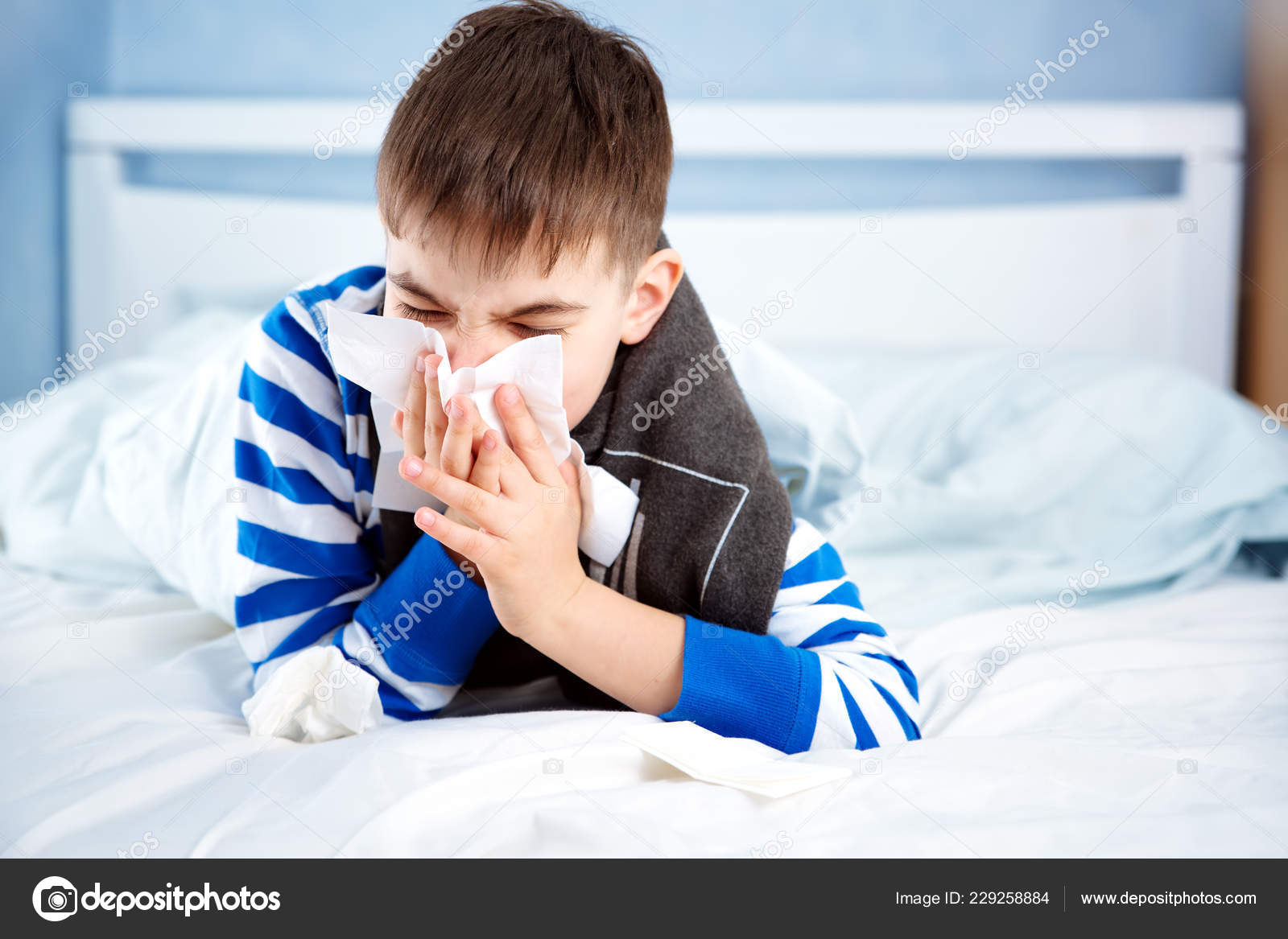 Once the specific allergen is determined, a plan of action can be made to help you avoid that allergen.
Once the specific allergen is determined, a plan of action can be made to help you avoid that allergen.
8 – Is Post-Nasal Drip a Serious Condition?
Usually, post-nasal drip is more annoying than serious. However, post-nasal drip can be a symptom that is the result of a more serious condition. If you believe that your post-nasal drip is a sign of something else, visit your ENT specialist to begin your path to recovery.
Ear, Nose & Throat Doctors
Mucus is normally produced by your throat and nose glands, and it’s swallowed without you even noticing it. When it thickens or builds up, however, it can cause post-nasal drip and a host of annoying symptoms.
In this blog, ear, nose and throat specialist Dr. Cecil Yeung of Houston Sinus Surgery at the Yeung Institute outlines the common causes of post-nasal drip.
What is post-nasal drip?
Mucus performs important functions in your nasal membranes, helping to fight infection, clean out foreign particles, and humidify air before it reaches your lungs. Nose and throat glands produce about a quart or two of mucus a day, and most of the time it’s able to drain normally. It drips down the back of your nose into the back of your throat, mixes with saliva, and is swallowed without you noticing it.
Nose and throat glands produce about a quart or two of mucus a day, and most of the time it’s able to drain normally. It drips down the back of your nose into the back of your throat, mixes with saliva, and is swallowed without you noticing it.
However, post nasal drip can cause mucus to build up or become thicker than normal, and you may notice an irritating feeling of it dripping down the back of your throat.
What are its symptoms?
The following are some of the most common symptoms:
- A noticeable feeling of mucus dripping down the back of your throat
- Chronic coughing, most often getting worse at night
- Feeling as though you need to frequently clear your throat
- Hoarseness
- A sore throat
Mucus can also cause other problems as a result of its inability to drain properly. If your Eustachian tube, which connects the throat and your middle ear, gets stopped up by mucus, it could cause an ear infection. The same is true of a sinus infection if your sinuses are clogged.
What causes post-nasal drip?
The thickened or excess mucus that’s unable to drain properly can result from any of the following causes:
- Colds
- Flu
- Allergies
- Sinus infection
- Certain medications – including some that treat blood pressure and some that are used for birth control
- Nasal polyps – non-cancerous growths on the lining of the nose and sinuses that can cause mucus to become blocked
- Deviated septum – a crooked or off-center wall of cartilage between your two nostrils can also cause mucus to become blocked
- Environmental irritants – such as smoke, chemicals, or perfume
- Pregnancy – can cause hormonal changes that affect your nose and sinuses
- Gastroesophageal reflux disease (GERD) – characterized by acid backing up into the esophagus or throat, sometimes causing throat irritation that can make it hard to swallow
How is it treated?
If your post nasal drip last for more than 10 days, smells foul, or you’re wheezing, you should seek medical attention. This is especially true if there’s blood in your mucus.
Otherwise, you can try some home remedies, including the following:
- Staying well hydrated
- Using saline nasal sprays
- Sleeping with your head slightly elevated
- Using a humidifier or vaporizer
If home remedies aren’t effective enough, you have ongoing issues or have a symptom that’s cause for concern, an ear, nose, and throat specialist (ENT) can treat your condition. Your doctor can help alleviate symptoms while also treating the underlying condition that’s the cause of your discomfort. Treatments may include the following:
- Antihistamines
- Cortisone steroid nasal spray
- Antibiotics – only for postnasal drip caused by a bacterial infection
- Medications that block stomach acid production – for post nasal drip caused by GERD
- Surgery – to correct structural issues such as nasal polyps or a deviated septum
If you’re experiencing symptoms of post nasal drip, make an appointment today with Houston Sinus Surgery at the Yeung Institute. Dr. Yeung has more than 20 years of experience in treating nasal and sinus conditions such as post nasal drip and is dedicated to providing the least invasive, most effective treatment possible.
90,000 causes, symptoms, signs, treatment with folk remedies, prevention. ENT diseases
In most cases, inflammatory processes in the ENT organs are associated with a common cold in the offseason. In the summer season, ARI can cause a cold air flow from an air conditioner or other climatic equipment in rooms. The situation is much more complicated if the inflammation is caused by viral or fungal infections, such diseases cannot be left to chance.
The main causes of diseases of the nasopharynx are:
- allergies;
- growth of polyps;
- viral infections;
- weakening of the immune system;
- staphylococcal pathogens;
- complications after other diseases;
- drafts and sudden temperature changes;
- congenital anomalies of the structure of the nasopharynx;
- chronic inflammatory processes of the ENT organs;
- inflammation of the teeth or purulent abscesses in the oral cavity.
Sinusitis
An inflammatory process in the area of the maxillary sinuses, which is accompanied by an increase in temperature, loosening of the mucous membrane, swelling and purulent yellow-green discharge from the nose is sinusitis. Distinguish between acute and chronic sinusitis. The acute form develops against the background of untreated rhinitis or sinusitis. In the acute period, the disease leads to difficulty breathing, hoarseness of the voice, stagnation of mucus in the maxillary cavities and headaches. Chronic sinusitis is mainly a consequence of the development of acute inflammatory processes.
The diagnosis of “sinusitis” is made by an ENT, based on the conclusion of an X-ray examination. In the treatment of the disease, potent antibiotics (Augmentin, Cefuroxime, Cefixim), symptomatic drugs (Sinupret, Nazol, Otrivin) and, in some cases, immunomodulators (Viferon) are prescribed. Traditional medicine for nasal congestion with sinusitis suggests dripping sea buckthorn and rosehip oil into the nose, as well as aloe juice mixed with honey and celandine in equal proportions.
If the treatment does not bring results and you feel the symptoms of the disease for more than 7 days, it is necessary to urgently consult an ENT specialist and change the therapeutic method.In exceptional cases, the only treatment is a maxillary sinus puncture.
Laryngitis
If you feel discomfort when swallowing, burning throat, hoarseness, loose and inflamed laryngeal mucosa, you are dealing with laryngitis. Laryngitis can develop against the background of infectious and colds, weakening of the immune system or overstrain of the larynx.
The complex of therapeutic procedures in the treatment of laryngitis depends on the nature of the disease and the individual characteristics of the patient.To relieve swelling of the mucous membrane and painful symptoms, you can do inhalations with anti-inflammatory oils, use Tonsilgon N tablets or drops, gargle your throat 5-6 times a day with a warm solution of alcoholic Chlorophyllipt (1 teaspoon per 200 ml of water), soda, sage or eucalyptus decoction … Sprays Ingalipt and Cameton effectively relieve hoarseness and swelling of the larynx. With improper treatment, complications of laryngitis can be laryngeal abscess and perichondritis.
Sinusitis
Chronic inflammation in the paranasal sinuses is called sinusitis.In most cases, the disease appears against the background of viral infections, allergies, contact with the mucous membrane of fungal or microplasma pathogens. The treatment regimen for sinusitis depends on the cause of the inflammation. Fungal and bacterial diseases are treated with antibiotics. With sluggish and chronic sinusitis, symptomatic medications are prescribed: Sinupret, Acetylcysteine, Euphorbium compositum. When sinusitis is caused by allergic reactions of the body, Nasonex is used.
If drug therapy does not bring results for more than 8 days, in order to exclude complications, it is necessary to consult an ENT specialist.Perhaps, to relieve the inflammation and improve mucus drainage, it is necessary to perform an outpatient lavage of the mucous membrane (“cuckoo” procedure) or to puncture the inflamed sinus.
Tonsillitis (tonsillitis)
Long-term inflammation of the palatine tonsils, which is accompanied by fever, sore throat and lymph nodes, cough, chills, headache and joint pain, hoarseness in the voice and loose mucous membrane with purulent discharge is tonsillitis. The familiar angina has many varieties and forms.An accurate diagnosis and treatment regimen for the disease can only be prescribed by ENT.
To detoxify the body in the treatment of angina, the patient needs plenty of drink and vitamins (C, B). Ibuprofen or Paracetamol will help reduce the temperature and pain symptoms. Purulent plaque on the throat can be removed by regular rinsing with a solution of Chlorophyllipt, sage, calendula. A highly effective remedy for angina is the iodine-containing Lugol solution.
For angina, antibiotics are prescribed, which are selected by the doctor…. Sprays and lozenges will help relieve sore throat: Strepsils, Faringosept, Grammidin, Lizobakt. Not diagnosed in time, angina can flow into chronic pathologies of the ENT organs.
Vasomotor rhinitis
Vasomotor inflammations constrict the nasal cavity and cause swelling of the mucous membrane. A side effect of the disease can be a violation of vascular tone and the absence of normal nasal breathing. Preventive measures for vasomotor rhinitis are saline irrigation with a solution of Humer, Solin, Aqua-Maris, taking medications that thin the mucus (Sinupret, Acetylcysteine) and symptomatic treatment of the common cold with drops (Naphthyzin, Vibrocil, Nazol).
Adenoiditis
Infectious-allergic inflammation of the pharyngeal tonsil is dangerous with consequences. Adenoiditis can provoke pneumonia, diseases of the digestive system, kidneys, heart defects.
In the treatment of adenoiditis, rinsing with saline solutions (Humer, Aqua-Maris), symptomatic spray-nebulizers (Nock spray, Vibrocil), decongestants (Sinupret, Fluditek), as well as quartzization and laser therapy are effective. An outpatient cuckoo procedure may be prescribed to remove pus from the surface of the adenoids.If the adenoids become inflamed regularly, they are recommended to be removed.
Important!
It is widely believed that any runny nose or sore throat will go away on its own in a week. Adults, when signs of inflammatory diseases of the nasopharynx appear, begin to drink ascorbic acid, tea with lemon, or use other ineffective methods. Untreated rhinitis or tonsillitis in 80% of cases flow into sinusitis, tracheitis and pneumonia. If your cold has not gone away after a week of symptomatic treatment, you should make an appointment with a specialist.
Mucus in the throat and nose with an unpleasant odor!
Check the possibility of treatment in this area at the moment
Foul-smelling mucus in the nose and throat is most often caused by a sinus infection (sinusitis) or post-anasal syndrome (mucus draining down the nasopharynx into the throat). Since under these conditions, a favorable environment is created for bacteria to multiply in the mucus, which leads to the addition of a fetid odor or a nasty taste.
Chronic sinusitis is a thick discharge that smells and tastes bad.Nasal congestion or inflammation inside the nose is a symptom of rhinitis, which is most often the cause of postnasal syndrome, when mucus flows from the nasopharynx into the throat.
The thick mucus is an ideal breeding ground for the anaerobic bacteria responsible for harsh bad breath (known as halitosis). Dentists say brushing your teeth does not eliminate bad breath caused by mucus draining from the nasopharynx.
Foul-smelling mucus associated with a temporary cold or allergic reaction can be effectively treated with a variety of home remedies that focus on weakening, thinning, and drying the secretions.A well-known remedy is to drink plenty of warm drinks, such as soups and herbal teas.
Treating sources of excess mucus production and eliminating the proliferation of anaerobic bacteria that thrive in this type of environment is the best way to prevent and get rid of mucus or bad breath associated with runoff into the nasopharynx.
Although rare, some may develop green or black crusts inside the nose that bleed and produce an unpleasant odor.This is a symptom of a disease such as chronic atrophic rhinitis (ozena).
Sinusitis is a common cause of an inflamed and blocked nasal passage, and can cause foul-smelling mucus. This is a condition in which the lining of the paranasal sinuses becomes inflamed. The inflammation and swelling is usually caused by a viral infection and often improves within two or three weeks.
This is a very common condition.In temperate countries, it affects about 5-15% of the adult population each year.
Sinuses (paranasal sinuses) are small air pockets that are located in the forehead, cheekbones, and eyes.
They protect the body by trapping germs. Bacteria or allergens can produce too much mucus, which can block the opening of the sinuses. This is how most people will have a runny nose with colds or allergies.
The accumulation of mucus can encourage microbial growth in the sinus cavity, leading to bacterial or viral infections. Most are viral and may go away in a week or two without treatment. An accumulation of secretions in the nasal passage and throat can cause bad breath and foul-smelling mucus.
Corticosteroid drops or spray may be used to treat these inflammations. Corticosteroids, also referred to simply as steroids, are a group of medications that can help reduce inflammation.If swelling or inflammation persists, your doctor may prescribe another treatment option.
Other symptoms, such as a stuffy nose, can be treated with a warm compress, and pain can be relieved with pain relievers. Antibiotics can sometimes be used to treat a mild bacterial infection that accompanies sinus inflammation.
Signs and Symptoms:
- Thick and greenish nasal discharge
- Nasal congestion that causes difficulty breathing
- Pain, swelling, tenderness and pressure around the eyes, cheeks, nose and forehead
- Severe headache
- Ear pressure
- Fever and fatigue.
Tonsillitis
Also a possible cause is tonsillitis – an inflammation of the tonsils – the oval pads of tissue at the back of the throat. Symptoms include swollen tonsils, sore throat, difficulty swallowing, and tender lymph nodes on the sides of the neck.
Tonsillitis is often caused by a virus, and a bacterial infection can sometimes cause swelling. The correct treatment depends on the underlying cause of the condition.Therefore, in order to receive proper treatment, it is necessary to make the diagnosis quickly and accurately. A doctor may order surgery when bacterial tonsillitis occurs too often, does not respond to other treatment options, or has other serious complications.
The inflammation can affect other areas of the throat, such as the adenoids and lingual tonsils. There are various variations of the disease: acute, recurrent and chronic course. In all three cases, sore throat and problems with swallowing are observed.
Postnasal syndrome
Drainage of mucus from the nasopharynx, also known as postnasal syndrome, occurs when there is excess secretion of the nasal mucosa. Excess mucus builds up in the throat or back of the nose. It is responsible for hydration and also helps trap and destroy foreign organisms such as bacteria and viruses before they can cause infection.
With normal secretion, mucus is invisible, it mixes with saliva and flows harmlessly behind the throat, and the person swallows it.When the body produces more of it and it gets thicker than usual, it becomes more noticeable. This usually occurs with inflammation, most often during rhinitis.
The accumulated mucus also provides a good breeding ground for odor-causing bacteria. When excess secretion comes out of the nostrils, it causes a runny nose when it flows down the back of the throat – called postnasal syndrome.
The problem can be caused by colds, flu, allergies, sinus infections, pregnancy, or changes in the weather.
Depending on the diagnosis, possible treatments include:
- Antibiotic for the treatment of bacterial infection
- Surgery for chronic sinusitis
- Allergy medication and spray
- Antacid when gastroesophageal reflux disease is causing the problem.
Polyps of the nose
Nasal polyps are soft, painless, irregular growths on the lining of the nose.They appear as a result of chronic inflammation due to asthma, recurrent infection, allergic reactions, and drug sensitivity or immune disorders.
Small polyps are asymptomatic, but large masses or a group of them can lead to breathing difficulties due to blockage of the nasal passage, and in some cases also loss of sense of smell and frequent infections. Although they are more common in adults, they can affect people at any age.
A doctor may prescribe medication to shrink or eliminate nasal polyps, but surgery is sometimes required to remove them. They may come back frequently even after consistent treatment. Unlike polyps, which form in the colon or bladder, nasal polyps are rarely cancerous. They are also not painful to touch.
Symptoms:
- Runny nose
- Irritant snoring
- Decreased sense of smell
- Severe headaches and facial pain
- Pain in the upper teeth
- Postnasal syndrome.
Inflammatory nasal discharge in adults, odorless
In adults, a common cause of foul-smelling mucus is rhinitis, which is an inflammation of the nasal passage. This condition is known to cause runny nose and nasal discharge.
Rhinitis can be temporary when it is caused by an allergic reaction, or a chronic condition when symptoms last for more than six weeks. In moderate cases of congestion, the condition can improve on its own, in chronic or severe cases, it is necessary for a doctor to diagnose the condition and prescribe treatment.
In an adult, another common cause of the problem can be sinusitis – an inflammation of the sinuses of the nose. Sinuses are air-filled cavities located behind the forehead, eyes, cheekbones, and bridge of the nose. They filter the air we breathe, using mucus to trap dirt, bacteria, and other potentially harmful particles.
Sinuses become inflamed or swollen during infections or allergic reactions. The accumulation of mucus creates a favorable environment for bacteria to grow and multiply, resulting in a foul-smelling bacterial infection.
Infection of the sinuses is manifested by the following symptoms:
- Nasal congestion
- Bad breath
- Sore throat
- Thick yellow or green mucus appearing in the nose or throat
- Cough, especially at night
- Dullness of taste and smell.
Mild cases of the problem in adults can be relieved on their own.In severe cases caused by allergic rhinitis, sinusitis, or postnasal syndrome, immediate medical attention is recommended. People with allergies or weak immune systems are most likely to develop a sinus infection.
Treatment involves not only controlling and managing symptoms, but also getting rid of the underlying cause of the disease. For allergic rhinitis or sinus inflammation, it is important that a doctor diagnoses the problem and prescribes the necessary medications.Thus, the risk of complications can be minimized.
After a medical examination, treatment will depend on the underlying cause of the illness or the severity of the symptoms.
Antibiotics
For sinusitis caused by a viral infection, antibiotic treatment is not required. An oral antibiotic may be used for bacterial infection. It can be suspected for facial pain, pus-like nasal discharge, or other symptoms that persist for more than a week.An infection can also be suspected when the condition does not respond to other medications.
Acute bacterial infection is treated with antibiotic therapy. Antibiotics work by killing or preventing the growth of bacteria that can cause sinus infections. When they are used for treatment, it must be remembered that:
- Number of days of antibiotic use depends on general health
- The choice of a drug depends on the body’s response to it
- You can use the medicine with another medicine, such as decongestant
Decongestant
A nasal spray can quickly help relieve congestion and swelling.There are many such products on the market.
But they also have their drawbacks, through which they cannot be applied for more than a few days. Most decongestant sprays contain the preservative benzalkonium chloride, which causes toxic reactions in the nose, eyes, ears, and lungs and can worsen the symptoms of allergic rhinitis. Thus, immediately a drug with this substance in the composition will be effective, but when the symptoms return within a day or two, they will be worse than before use.
Steroid Nasal Spray
Nasal steroid sprays are commonly used products that are used to relieve swelling in the nose. It can also be used for allergies such as hay fever. Steroid sprays are also good for relieving symptoms of inflammation caused by other conditions.
Corticosteroid nasal spray reduces swelling and mucus in the nasal passage. It can also be effective in relieving associated symptoms such as a runny nose, sneezing, congestion, itching, or swelling of the nasal passage.
Pain reliever anti-inflammatory drugs
Paracetamol, aspirin, ibuprofen, and other NSAIDs can be used to help fight fever and headaches that can accompany swelling and inflammation. Various brands of pain relievers can be found in pharmacies.
Surgery for chronic sinusitis
Sometimes surgery can be performed due to a complication of sinusitis, which can include pus in and outside the sinus.The purpose of the operation is to drain the sinuses:
Surgery does not always completely fix the problem; some people will need a second operation. When treating a swollen, infected nasal passage, surgery becomes more effective when used with another medication.
Folk remedies
Peppermint oil.
It is suitable for oral and topical use and has antimicrobial properties.Along with lavender, peppermint oil may be one of the most versatile essential oils in the world.
Drinking warm liquids can also help maintain your body temperature.
and relieve some of the symptoms of the common cold, such as sneezing and runny nose.
Salt.
You can also try rinsing, or even better, rinsing the nasopharynx with salt. It has strong antibiotic, anti-inflammatory and antiseptic properties that help fight bacterial infections in the mouth.
Ginger.
While the root of this plant does not help stop the excretion process itself, it can help flush out mucus that remains after the disease is cured. It is an ancient remedy that has been used in many medicines for colds and coughs.
Raw honey.
It is an antibacterial, anti-inflammatory, and antifungal home remedy.It also contains antioxidants and flavonoids, and not only reduces mucus secretion, but also soothes irritated airways.
This article is for informational purposes, in more detail about the prevention of ENT diseases (specified in this publication), you can tell the Otorhinolaryngologist of the Society’s Polyclinic.
In your free time, call the call center 8 (495) 356 3003 and make an appointment with an ENT specialist.
Polyclinic LLC “Innovative Technologies” thanks you for that,
that you took the time to read this information.
90,000 Drops and sprays for flu and colds
Order drops for colds
On the site you can order drops for colds with delivery to more than 1200+ pharmacies in Moscow and St. Petersburg and adjacent regions. On the site, each client will be offered:
- list of drugs with broad and narrow spectrum of action;
- an opportunity to choose analogs of the required medicine in a more expensive or cheaper price category;
- bonus programs, promotions and discounts;
- detailed instructions for each of the presented medicines;
- Possibility to choose a medicine by name, active ingredient, brand.
All medicinal products are licensed and certified. Payment is made upon receipt of the order at the selected pharmacy.
Readings
For the treatment and elimination of symptoms in adults and children can be used:
- drops from ear congestion with a cold to eliminate inflammation, swelling, normalize the formation of exudate, moisturize, eliminate pathogenic
microflora of a bacterial nature; - sore throat sprays are prescribed to destroy pathogenic microflora, pain, dryness, swelling and difficulty breathing;
- drops from influenza in the nose or for drinking are used to dilate blood vessels, relieve symptoms of dryness and inflammation, runny nose [1], are used as
preventive and therapeutic agents.
Many of the presented drugs have a wide spectrum of action, therefore they are used for the prevention and treatment of manifestations of various symptoms of the common cold.
Contraindications
The main contraindications for taking medications include:
- in some cases, children;
- hypersensitivity to the components of the product;
- during pregnancy and lactation should be used only as directed by a doctor;
- the presence of a number of chronic and exacerbated diseases.
Forms of issue
Nasal drops for flu and colds are available in the following dosage forms:
- Suspensions for instillation into the nose, ears, dilution with drinking;
- aerosols for spraying into the nose and throat.
Some of the drugs presented on the site can be found in the catalog in the form of tablets. In some cases, the patient is shown an increased
dosage of one or another agent, however, only the attending physician can combine 2 drugs with one active substance.
Countries of origin
Drops and sprays for the common cold, sore throat, ear congestion and other manifestations of colds and flu are produced in different countries of the world:
- RF;
- Germany;
- Norway;
- Canada and others.
BEFORE USING THESE PREPARATIONS, PLEASE READ THE INSTRUCTIONS FOR USE OR CONSULT A SPECIALIST.
References:
- [i] ICD-10. Access via the link http: // mkb-10.com / index.php? pid = 9002
90 000 ▶ How to distinguish a cold from an allergy. Treatment at ADONIS, Kiev
Recently, more and more patients complain of severe runny nose, sneezing, watery eyes, nasal congestion, sore throat and other symptoms. The cause of this condition can be both a cold (ARVI) and an allergy.
How to understand by similar symptoms what disease we are dealing with and to distinguish, for example, an allergic rhinitis from a cold.
Respiratory infections or colds are the most common ailments in humans. In recent decades, allergies have also affected an increasing number of patients.
Today, almost every second child is susceptible to this disease, and no one heard about it for a century.
What is the reason for this rapid prevalence? The increase in the number of cases is explained by the deterioration of the environment, the development of the chemical industry and the widespread use of modified food.
Scientists have also noticed that there are more allergy sufferers in pure developed countries. They found that the prevalence of allergies was related to hygiene. A modern person often resorts to hygiene procedures. This reduces the burden on the immune system and makes the body more vulnerable to various antigens.
How do you know if you have an allergy or a cold?
Allergy symptoms are similar to those of a cold. Common symptoms of these two diseases include a runny nose, cough, profuse tears, and sore throat.
You can understand the difference in similar symptoms by answering a few questions.
What causes colds and allergies?
Allergy is not transmitted with a virus from one person to another, but arises as a result of the body’s reaction to plant pollen, animal hair, household chemicals, food. People with a genetic predisposition to allergies are at risk.
Household dust, molds, animal feed and other pathogens are also common allergens.
The causative agents of infectious processes are mainly various viruses. There are more than 200 species of them. They are easily transmitted through dirty hands, as well as by airborne droplets and first of all affect the mucous membrane of the respiratory organs.
What time of year do symptoms appear?
You can distinguish a cold from an allergy by the following temporary signs.
The number of patients with seasonal allergies increases dramatically in the spring-summer period during flowering.Such people have a sharp deterioration in health when going outside.
Although year-round allergies are also possible. It occurs, for example, as a result of household allergies, contact with animals or nutritional errors.
On the contrary, the frequency of colds increases in the autumn-winter period, and significantly decreases in the warm season.
Symptoms of colds appear mainly after contact with a sick person against the background of hypothermia, stress and other factors that reduce immunity.
What is the duration and intensity of the illness?
To distinguish an allergy from a cold, you need to pay attention to the duration of the symptoms. Colds and viral diseases go away in one to two weeks. Whereas an allergy can last a month, a season, or even years, if the irritant is not removed. With prolonged contact with the allergen, the allergy can develop into bronchial asthma.
Signs of a viral disease appear gradually and change with the course of the disease.Allergy occurs suddenly, depending on the time of year or place of stay.
How does differ in the nature of the discharge?
Patients with colds and allergic rhinitis have nasal congestion and impaired sense of smell. The nature of the secreted mucus will help to understand what caused this state of health. With allergies, nasal discharge is clear and runny, It is often accompanied by itching in the nose and frequent sneezing. With a cold, greenish or yellowish tints of discharge and a more viscous consistency are characteristic.
Is there a fever with allergies?
Colds and acute respiratory viral infections are often accompanied by high fever, which is knocked down with the help of antipyretic drugs. The temperature does not rise with allergies, except in cases with concomitant inflammatory processes in the body. Including fever is possible with a skin reaction to an allergic threat and with atypical allergies. In this case, antipyretic drugs cannot bring down the fever.
When does it happen itching, redness ?
In allergic rhinitis, as a rule, the nose itches, tears flow, watery, eyes swell, sneezing is paroxysmal in nature, from the nose “a stream flows”.For colds, lacrimation, itching are not typical.
When do you have a headache and a sore throat?
Sore red throat, headache and muscle pain, body aches, chills, weakness, are more common for colds.
Is there a cough with allergies?
Dry, hacking cough of a paroxysmal nature, may be a sign of allergy. It can be easily confused with a viral cough. Sometimes only a specialized specialist can help distinguish an allergic cough from a cold.
Allergic rhinitis symptoms:
- Itching of nose and eyes, lacrimation, sneezing
- Clear watery nasal discharge
- Duration of symptoms (do not pass more than 2 weeks)
- Symptoms worse in the morning hours or in a certain situation
- The characteristic features are repeated annually in the same season
Diagnostics
Any allergic manifestations require medical attention and a comprehensive examination.An allergist or ENT doctor will refer you for testing. This will help to identify the “enemy” and remove the irritant from everyday life.
The ADONIS Medical Center carries out modern allergy tests for food, pollen, epidermis and wool, as well as household allergens.
Allergy tests include:
- Allergy skin tests are a painless procedure during which reactions to several allergens are tested. Skin tests are performed only during remission.
- Molecular tests (blood testing) – done at any time, including during an exacerbation of the disease.
Treatment of colds and allergies
There are no drugs in medicine that can cure colds and allergies once and for all. The treatment for these conditions is different, but in both cases it is aimed at relieving symptoms, shortening the duration of the disease, and reducing inflammation.
Treatment is preceded by a doctor’s examination, an analysis of the patient’s complaints and a careful study of the analysis results and medical history.After that, the doctor determines the tactics of treatment.
For colds, family doctors, otolaryngologists prescribe drinking plenty of fluids, antipyretic drugs, symptomatic treatment. To relieve nasal congestion, vasoconstrictor drops are used. Infectious rhinitis is treated with antibacterial drugs. To relieve inflammation from the throat, gargle or pain relievers are prescribed, and antitussives for coughs.
For the treatment of allergic rhinitis, it is important to identify and, if possible, eliminate the irritant.Drug therapy is given to relieve symptoms. This includes antihistamines (those that block the action of the allergenic substance), steroid inhalation, eye drops, and other drugs.
If relief does not come, immunotherapy (injections of low-dose allergens) may be needed.
Self-medication often leads to an aggravation of the disease and the appearance of complications.
Allergic manifestations and signs of a viral infection bring discomfort to the measured life of a person: they worsen well-being, interfere with sleep, and work productivity.Prolonged exposure to an allergen and lack of proper treatment can cause loss of smell, chronic bronchitis, or asthma.
90,000 Antibiotics for short-term sinus infections in adults
Review Question
Is antibiotic treatment faster than antibiotic treatment for sinus infections in adults?
Relevance
A sinus is a cavity located in the head. Adults with short-term sinus infections have nasal congestion and thick, yellow discharge from the nose.People with a sinus infection may feel mucus on the back of the throat, facial pain, pain when bending forward, and pain in the upper jaw or when chewing. A short-term sinus infection can be suspected after a physical examination and questioning about symptoms. Blood tests and sinus imaging can confirm the diagnosis, but are not routinely recommended in most countries. Viruses are the most common cause of short-term sinus infections. However, doctors may prescribe antibiotics, which should only be used to treat bacterial infections.Taking antibiotics unnecessarily leads to antibiotic resistance of bacteria. We assessed whether antibiotics could cure adults with a short-term sinus infection faster compared to pacifiers (placebo) or no treatment.
Search date
January 18, 2018.
Characteristics of research
We included 15 studies in which adults with short-term sinus infections, confirmed or unconfirmed by imaging, were randomly assigned to receive antibiotics, pacifiers, or no treatment on an outpatient basis.The studies enrolled 3,057 adults with an average age of 36; about 60% of the participants were female. Participants were followed until cured. The duration of the trials ranged from 8 to 28 days.
Sources of research funding
Seven studies received financial support from government or academic institutions; six – grants to the pharmaceutical industry; five did not provide funding sources.
Main Findings
Without antibiotics, almost half of all participants were cured after 1 week, and two-thirds after 14 days.For every 100 participants, out of 5 (diagnosed based on symptoms described to the doctor) – 11 (confirmed by x-ray) more people healed faster with antibiotics. Computed tomography (CT) scans can predict who will benefit from antibiotics, but its routine use can lead to health problems due to radiation exposure. For every 100 participants, 10 more people got rid of thick, yellow nasal discharge faster with antibiotics compared to dummy medication or no treatment.For every 100 participants, 30 more people experienced side effects (mostly from the stomach or intestines) with antibiotics versus dummy medication or no treatment. When compared to people who took antibiotics initially, an additional 5 out of 100 people in the dummy or no treatment groups were forced to start taking antibiotics due to worsening conditions. Serious complications (eg, brain abscess) were rare.
We have found that antibiotics are not first line treatment for adults with short-term sinus infections.We found no evidence for adults with severe sinusitis or immunosuppression, or children.
Quality of evidence
When the diagnosis was based on symptoms reported to a physician, the quality of the evidence was high. We reduced the quality of the evidence to moderate when the diagnosis was confirmed by X-ray or CT, as the number of participants was small and the estimate became less reliable.
Treatment of ARVI, ARI and influenza in pregnant women in the clinic Health Territory
The first signs of ARVI – what should the expectant mother do?
How to help your body to cope with malaise, how not to harm the unborn child, and when serious help from specialists is needed? To help mothers, the specialists of our Center (obstetrician-gynecologist, midwives, homeopaths, ENT, naturopath and aromatherapist) offer an algorithm of actions that is consistent with all modern data of international recommendations.
But, most importantly, remember that an expectant mother, like no one else, is very important emotional attitude – positive emotions will help you to quickly cope with all the troubles.
Let us repeat, following our experts: “Word and thought are material!”
- At the first sign of a cold (sore throat when swallowing, hoarse voice or sore throat, runny nose, headache, body aches, weakness) – stay at home, observe a gentle regimen, put on masks on all family members, remind everyone more often to wash hands.
- If it is impossible to get to a homeopath for the exact prescription of an individual preparation, you can take complex homeopathic preparations: “Oscillococcinum” once (!) Or homeopreparations “Agri” (according to the scheme in the instructions), “Gripp-Heel” (also according to the instructions).
- For sore throat drugs – “Tonsilotren”, “Tonsilgon” or “Angin-Heel” will help. Be sure to regularly gargle with herbal infusions (eucalyptus, calendula, chamomile) three to seven times a day.
- In case of a cold – “Corizalia” (at the first symptoms of a cold with strong discharge).You can use nasal drops – hypertonic sea water solutions, “Pinosol” (if there is no allergy). With nasal congestion – alkaline inhalations. If breathing over boiled potatoes helps you, then you can breathe.
- For coughs and colds, you can drink ginger tea – pour half a glass of ginger grated on a coarse grater with good honey, leave for 24 hours. Drink, adding 1-2 tsp. mixture in a cup of hot water. Cranberry juice is useful. For dry cough, homeopathic medicines “Bronhalis-Heel” and “Tartefedrel” can be used.
- If hypothermia occurs and you feel chilly, drink hot tea with dry raspberries or raspberry jam. Chicken broth (strictly fresh) also helps.
- Aromatherapy will help not only alleviate symptoms, but also cope with bacteria. Possess antiviral and antibacterial effect – laurel, peppermint, eucalyptus. Oils can and should be mixed (up to 8 drops per “serving”). To the listed ones, you can add orange or lemon oil.And for evening and night spraying, add a soothing – lavender oil or mandarin oil to the antiviral and microbial ones. For the treatment of a runny nose, cough, sore throat, you can prepare the following mixture: 4 tablespoons of peach oil (used as a base), 1 drop of lavender, 2 drops of eucalyptus, 1 drop of tea tree. This mixture should be instilled into the nose in 1-2 drops after rinsing the nose with a spray with sea water.
- Motor mode (at the first sign – stay at home, but if you feel well, do not give up a short walk in nature, in a park (not in a shopping center!).
- Mood. To improve your mood, you can hang garlands of Christmas trees (a variant of natural aromatherapy), pine twigs, and cones. Let a lot of sun into the house – light candles, and put bright fruits in prominent places – in the bedroom, for example – oranges, lemons, grapefruits, pomelo (again, natural aromatherapy) or pineapples – any of your favorite fruits. To wake up in the morning and immediately see a lot of bright “suns” by the bed, which have accumulated all this joyful energy for us. “
- And the most important thing – be sure to inform your doctor about your health! The doctor will recommend you what is especially important for you.
- “If the temperature does not exceed 38.5, do not take antipyretics. At a very high temperature, severe weakness, bad breath, severe cough and any deviation from the course of a common cold, as well as if there is no improvement within THREE DAYS, be sure to consult a doctor “(head physician of the Health Territory, obstetrician-gynecologist Alexander Sergeevich Gavrilenko).
For help in preparing the material, we thank the obstetrician-gynecologist of the Health Territory Irina Stepanovna Arefieva.
Additions and recommendations of our specialists:
“If the cold penetrates deeply, then a watery runny nose or sore throat appears, and then a cough. Then you can drip into the nose “Derinat” (not contraindicated for pregnant women, but recommended after consulting a doctor) or “Pinosol”. Gargle with calendula, and I also recommend gargling with NATURAL (!) Apple cider vinegar (2 teaspoons per glass of water) 3-4 r / d.it is necessary to treat the whole body, to understand the cause of the cough! Is it just hypothermia? Then it will pass quickly. But, if there is a “weak link” in the respiratory (lungs) or genitourinary (kidney) systems, or there may be a problem in the intestines, then the treatment must necessarily be comprehensive.
- Olga Bannikova, obstetrician.
“You can turn on the aroma lamp for a long time (for the whole night, for example). But if you are not sure of the body’s response, try turning it on for 2 hours, then wait a few hours and turn it on for another 2 hours.It is better to use ultrasonic aroma lamps (they are more effective and, unlike those heated by a candle, they are designed for a large area of application – 20-30 sq. M.) ”.
- Yulia Krushanova, microbiologist, Ph.D., specialist in medical aromatherapy and Ayurveda:
“You can prepare a universal solution for an aroma lamp: 5 ml of alcohol, 200 ml of water and 10 drops of a mixture of oils: pine oil, lemon oil, leuzea oil, bergamot, grapefruit. This aroma mixture is good for both prevention and treatment.There is some oil correction for the aroma lamp: you cannot evaporate thyme in the lamp (too active oil, can give bronchospasm), the orange aroma raises the appetite (it would be more optimal to use lemon, grapefruit, bergamot), Leuzea oil can only be used cold (that is, without heating in an aroma lamp with candles). In general, cold water spraying is preferable to heating, since when heated in an aroma lamp, some components of essential oils undergo changes and are destroyed without having a beneficial effect.For the same reason, an ultrasonic aroma lamp is preferable to an aroma lamp heated by candles. It is very important that the aroma lamp heated by candles does not run out of water in the bowl, since it is clear that oil should not burn, it should evaporate from the surface of the water. ”
- Laima Lankmane, naturopath and herbalist:
“It is especially important for a pregnant woman to carefully read all the instructions for phyto-drugs – first of all, this concerns the first trimester, when the body of the expectant mother is extremely sensitive to everything and undergoes a strong hormonal change.But throughout pregnancy, it is necessary to be careful with phyto-drugs and it is better to consult with your doctor before using. With hypothermia, the first signs of the disease, you can – ginger with lemon, honey (better with a bite, because when heated above 40-50 degrees, it not only loses many of its nutritional properties, but can also harm a sensitive stomach), green teas and all natural drinks with a large amount of vitamin C (for example, rosehip decoction works well).Linden leaves and dry raspberries – yes, but raspberry jam (unless it is, of course, a frozen berry) will not bring much benefit. Unfortunately, with prolonged cooking, the berries lose many of their antibacterial and phyto-properties. In addition, in the jam, besides the taste “from childhood”, there is a lot of excess sugar that you do not need now. However, if a cup of tea with a spoonful of such jam lifts your spirits and spirits, then it is definitely a medicine! And do not forget that word and thought are material! ” Source: Bone, K. (2003), A Clinical Guide to Blending Liquid Herbs, Churchill Livingstone, USA
Doctors of the Health Territory will always be happy to answer your questions! 8 (495) 988 52 52
90,000 🧬 Rhinitis in pregnant women
Otorhinolaryngologist, surgeon at GMS Clinic Oleg Abramov talks in his article about rhinitis of pregnant women (hereinafter RB).
It was not by chance that I chose this topic after a series of publications on the social network about allergic rhinitis (hereinafter AR), since recent studies note that although the cause of RB is not completely clear, the combination of AR, which is especially poorly controlled together with RB, can lead to pronounced nasal congestion, insufficient oxygen supply, and, as a result, increased fatigue, irritability, frequent acute respiratory viral infections, sleep disturbances, which can certainly affect the development of the fetus.Moreover, the presence of AR is associated with snoring in women during pregnancy, and together they can provoke the development of apnea syndrome (respiratory arrest during sleep), which leads to arterial hypertension, preeclampsia, slowing of intrauterine growth of the fetus and low Apgar scores. Therefore, the urgency of this problem is only growing.
Definition and Concept
Rhinitis of pregnancy is a condition that causes nasal congestion and discharge, and occasional sneezing without signs of inflammation, allergies, or other causes.This condition can occur during any trimester of pregnancy and usually resolves within two weeks after delivery.
Occurrence
Nasal congestion is a very common problem during pregnancy (it occurs in about 65% of cases) and can occur due to various reasons. RB according to various sources occurs in 9-40% of cases, and, in one of the latest observations, an increasing incidence is noted, that is, most RB is observed in the 3rd trimester – 38.9%, including those who did not have problems in 1st and 2nd trimester.
Causes and mechanism of occurrence
The mechanism of occurrence is not fully understood, and it is believed that RB occurs as a result of hormonal changes, in particular, under the influence of progesterone, estrogen, hCG and other hormones, the concentration of which gradually increases during pregnancy. Some authors believe that the onset of RB is associated with a worsening of concomitant AR. Some studies show that hormonal effects relax the smooth muscles that make up the vascular wall of the nasal mucosa, resulting in nasal congestion.These findings are supported by other studies that show that oral contraceptives have similar effects in the nasal cavity (but not all). Other studies show that increased body mass index, overweight, multiple pregnancies provoke or aggravate RB.
Progression and potential risks
RB, in the absence of adequate treatment, has an adverse effect on the course of pregnancy and can lead to the development of rhinosinusitis, which is especially difficult to tolerate in the 3rd trimester.On the other hand, pregnancy is a special period in a woman’s life, in which a large number of drugs are prohibited, and ENT pathologies, these restrictions are also not spared. Very often I hear at the reception: “Doctor, I am pregnant and I am suffering with my nose all this time, but the doctors tell me – nothing can be done about it, I have to endure it.” On the other hand, the opposite situation is often observed “Doctor, I am pregnant and I cannot live without vasoconstrictor drops.” These situations, of course, are not correct, since on the one hand there is a way out and optimal treatment, and on the other hand, constant exposure to vasoconstrictor drugs is not at all a way out of the situation.
Diagnostics
At the moment, there is no specific test to confirm or exclude RB. The diagnosis is made on the basis of the patient’s complaints and the exclusion of other pathologies of the nasal cavity.
Choice of treatment tactics
Saline solutions
Before considering more serious medications, we should start with our favorite saline solutions.It should be noted that we are not talking about ordinary saline solutions, but hypertonic saline solutions (with a high salt content, approximately 19-23 g / l). These sprays are sold in all pharmacies, but they will not be sold to you right away (you need to ask). Several studies have noted significant efficacy in reducing congestion when using them for AR, chronic rhinosinusitis. Also, comparative studies show their greater effectiveness compared to conventional isotonic solutions. Examples: Physiomer – hypertonic solution (my favorite), Aqualor-congestion, or Aqualor-severe rhinitis, Aquamaris Strong.
Doctor, not helping …
As is known from past publications, intranasal glucocorticosteroids (ICS) are the most effective in the treatment of AR today. They are proven to be effective in reducing nasal congestion as well as nasal itching and lacrimation and help to achieve adequate symptom control. But, given their hormonal effects and possible harmful effects on the fetus, there are certain risks in their use.It should also be noted that at the moment there are no studies providing reliable data confirming the dangers of their use. Modern ICS – mometasone (nazonex, desrinitis) and fluticasone (avamis, flixonase) have a very low systemic bioavailability, less than 1% and proven efficacy, thus, can be considered as the initial therapy for RB. The studies did not reveal a statistically significant relationship between the development of fetal malformations and the use of these funds.
Who is the US FDA and why is everyone listening to them?
Everything is very simple (it’s a pity that everything is not so simple here).Copying the explanation from Wikipedia: “Agency of the US Department of Health and Human Services, one of the federal executive departments. The department is engaged in quality control of food products, medicines, cosmetics, tobacco products and some other categories of goods, and also monitors compliance with legislation and standards in this area. ”
According to the FDA classification for the effect of drugs on the fetus, budesonide (tafen nasal) belongs to category B, which means that there is evidence of the safety of using this drug during pregnancy.In this case, the bioavailability of budesonide is 33%. This drug has moved from group C to group B, thanks to several high-quality studies in Sweden since the beginning of the 21st century, proving its safety.
Also, according to the current recommendations of the American Academy of Allergology and Immunology (AAAAI), ICS are considered safe and effective in the treatment of rhinitis and rhinosinusitis during pregnancy. But at the same time, there is no indication of specific drugs.Other competent medical associations also do not make any recommendations for drug selection. Therefore, summing up all of the above, as well as according to the data of the last review, mometasone, fluticasone, budesonide can be considered as safe and effective drugs in the treatment of RB. It should also be noted that an experienced ENT doctor should be involved in prescribing the drug and managing the patient, since these drugs are sold in the Russian Federation without a prescription; we strongly recommend not to self-medicate.
May I not take these hormones!
In some situations, ARVI during pregnancy can be accompanied (largely due to concomitant RB or AR or their combination) with a prolonged runny nose, nasal congestion and heaviness in the face – the classic symptoms of rhinosinusitis. This disease, in the absence of adequate treatment, can lead to serious complications, therefore, the correct diagnosis of this disease is extremely important.Penicillin antibiotics are FDA Category B antibiotics and can be used in treatment (ARS). Some cephalosporins or lincosamides (Clindamycin) may also be used if you are allergic to penicillins. All of them belong to categories A and B. ICS are included in the standards for the treatment of acute rhinosinusitis (for more details in the following publications) and can provide recovery in combination with saline solutions without antibiotics.
P. S. Decision-making on treatment is individual for each case and should be collective between the doctor and the patient.



